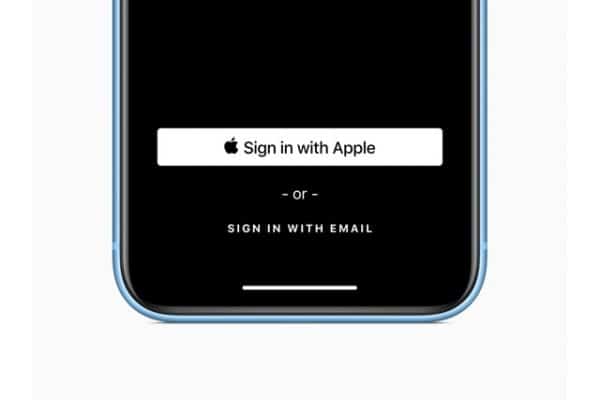'Sign in with Apple' neatly balances privacy and convenience

At WWDC yesterday, Apple made numerous announcements and one of the more interesting was the company's new alternative to social sign-in buttons. Endless apps and website let you sign in with your Facebook, Twitter or Google account for the sake of convenience, but it comes at the cost of privacy -- which is precisely why Apple came up with "Sign in with Apple".
The basic idea is the same as existing social sign-in options -- it's a quick and easy way to sign into various services without the need to create a dedicated account. The difference is that "Sign in with Apple" protects your privacy and avoids the tracking of the current crop of alternatives.
See also:
- Apple unveils the stunning iOS 13 with a system-wide Dark Mode, Sign In with Apple, and all-new Photos app
- iPadOS is Apple's new operating system for iPad
- macOS 10.15 Catalina is the most exciting version of Apple's operating system in years
Privacy really is the big selling point here, and it is something that Apple has shown increasing interest in recently. You may have got into the habit of creating special email addresses to use solely for signing up for new apps and service -- it's a good way to avoid spam and the concern of sharing an address that could be easily linked to you.
In essence, this is what "Sign in with Apple" does for you, creating a unique and random email address for you as part of the sign-up process. Any emails that need to be sent to you -- new account confirmations and the like -- can be forwarded to your real email address, but the developer of the app or service you're using never gets to see this address, and email addresses can be disabled at any time.
Apple says it offers "fast, easy sign in without the tracking", and explains:
Instead of using a social account or filling out forms, verifying email addresses or choosing passwords, customers can simply use their Apple ID to authenticate and Apple will protect users' privacy by providing developers with a unique random ID. Even in cases where developers choose to ask for a name and email address, users have the option to keep their email address private and share a unique random email address instead. Sign In with Apple makes it easy for users to authenticate with Face ID or Touch ID and has two-factor authentication built in for an added layer of security. Apple does not use Sign In with Apple to profile users or their activity in apps.
What remains to be seen is just how popular the new option proves with developers and users. Can it really sway people way from signing in with social media accounts?
